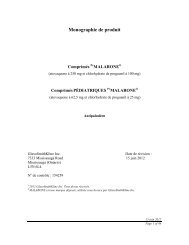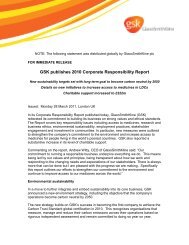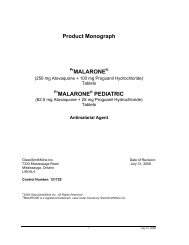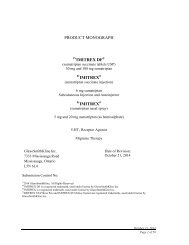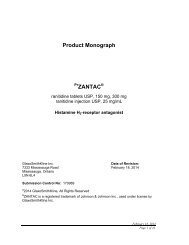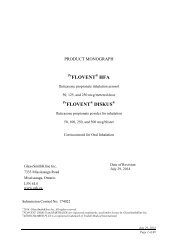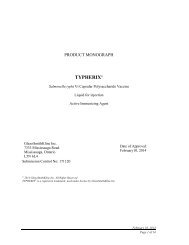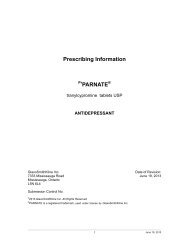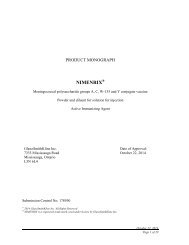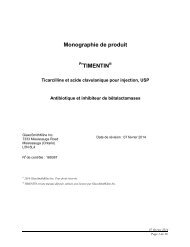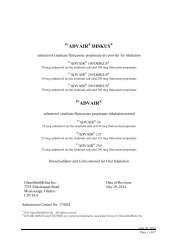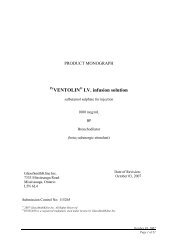Ventolin, Respirator Solution, Nebules - GlaxoSmithKline
Ventolin, Respirator Solution, Nebules - GlaxoSmithKline
Ventolin, Respirator Solution, Nebules - GlaxoSmithKline
Create successful ePaper yourself
Turn your PDF publications into a flip-book with our unique Google optimized e-Paper software.
Lactic acidosis has been reported in association with high therapeutic doses as well asoverdoses of short-acting beta-agonist therapy, therefore monitoring for elevatedserum lactate and consequent metabolic acidosis (particularly if there is persistence orworsening of tachypnea despite resolution of other signs of bronchospasm such aswheezing) may be indicated in the setting of overdose.TreatmentConsideration should be given to discontinuation of treatment and appropriatesymptomatic therapy. To antagonise the effect of salbutamol, the judicious use of acardioselective beta-adrenergic blocking agent (e.g. metoprolol, atenolol) may beconsidered, bearing in mind the danger of inducing an asthmatic attack. Duringcontinuous administration of salbutamol <strong>Respirator</strong> <strong>Solution</strong>, any signs of overdosage canusually be counteracted by withdrawal of the drug.ACTION AND CLINICAL PHARMACOLOGYMechanism Of ActionSalbutamol produces bronchodilation through stimulation of beta 2 -adrenergic receptors inbronchial smooth muscle, thereby causing relaxation of bronchial muscle fibres. Thisaction is manifested by an improvement in pulmonary function as demonstrated byspirometric measurements. Although beta 2 -receptors are the predominant adrenergicreceptors in bronchial smooth muscle and beta 1 -receptors are the predominant receptorsin the heart, there are also beta 2 -receptors in the human heart comprising 10% to 50% ofthe total beta-adrenergic receptors. The precise function of these receptors has not beenestablished, but they raise the possibility that even highly selective beta 2 -agonists mayhave cardiac effects. At therapeutic doses, salbutamol has little action on the beta 1 -adrenergic receptors in cardiac muscle.A measurable decrease in airway resistance is typically observed within 5 to 15minutes after inhalation of salbutamol. The maximum improvement in pulmonaryfunction usually occurs 60 to 90 minutes after salbutamol treatment, and significantbronchodilator activity has been observed to persist for 3 to 6 hours.PharmacokineticsAfter inhalation of recommended doses of salbutamol, plasma drug levels are very low.When 100 mcg of tritiated salbutamol aerosol was administered to two normalvolunteers, plasma levels of drug-radioactivity were insignificant at 10, 20 and30 minutes following inhalation. The plasma concentration of salbutamol may be evenless as the amount of plasma drug-radioactivity does not differentiate salbutamol from itsprincipal metabolite, a sulphate ester. In a separate study, plasma salbutamol levelsranged from less than 0.5 ng/mL to 1.6 ng/mL in ten asthmatic children one hour afterinhalation of 200 micrograms of salbutamol.October 2, 2014Page 13 of 37



